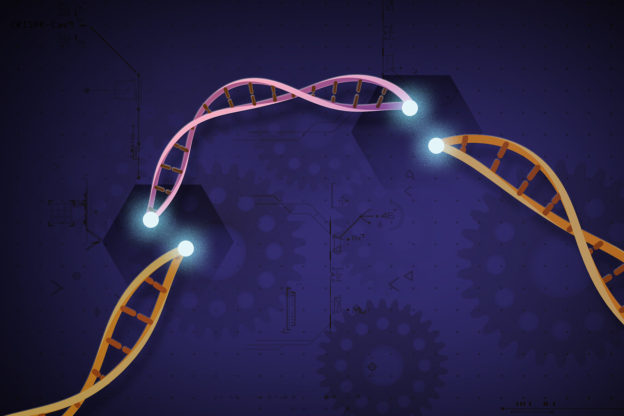CRISPR is a gene editing tool that works by precisely removing short segments of DNA from genes. CRISPR technology has attracted interest from the cancer research community since cancer is a genetic disease.
CRISPR consists of two components: an RNA targeting device called guide RNA, and an enzyme, commonly Cas9. The precise location of the problematic DNA sequence of a gene is determined. The guide RNA is complementary in sequence to a target DNA of a gene and binds to it. Cas9 then cuts the DNA at this location. This process is known as “knock-out” or removal of a gene. The cell’s normal DNA repair mechanism fixes the cut by joining the two cut sections of DNA. It is also possible to “knock-in” or insert a gene between the two DNA segments.
CRISPR has been used in studies to improve immunotherapy, harnessing the body’s defense mechanism to treat cancer. In particular, CRISPR has been shown to enhance the effectiveness of CAR-T therapy. T cells are an essential component of the immune system and can interact with cancer cells through receptors. Cancer cells can develop the ability to activate or disable receptors resulting in a loss of immune function.
Studies have been conducted using CRISPR to disable CTLA-4, PD-1, and other receptors that inhibit immune function. Although CRISPR could theoretically be used to “knock-in” genes that could activate receptors to attack cancer cells, this approach has been more challenging.
References
- Liu, J. et al. “ Building Potent Chimeric Antigen Receptor T Cells With CRISPR Genome Editing.” Frontiers in Immunology. March 19, 2019. https://www.frontiersin.org/articles/10.3389/fimmu.2019.00456/full
- National Cancer Institute. “How CRISPR Is Changing Cancer Research and Treatment.” July 27, 2020. https://www.cancer.gov/news-events/cancer-currents-blog/2020/crispr-cancer-research-treatment?cid=eb_govdel
- Stadtmauer, E., et al. “CRISPR-engineered T cells in patients with refractory cancer.” Science 367, 1001 (2020). https://science.sciencemag.org/content/sci/367/6481/eaba7365.full.pdf
